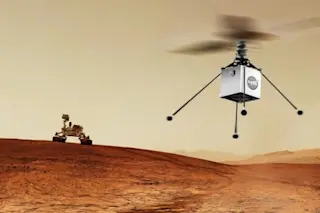Just under a year before launch, NASA’s unnamed Mars 2020 rover is getting ready for its big mission with the new addition of the Mars Helicopter Scout.
The Helicopter Scout will be the first rotorcraft to fly on another planet. And though the mission is considered high-risk, it could also come with a high reward. If the helicopter is successful, more flying craft could be used in future Mars exploration missions. On this flight, the helicopter isn’t carrying any scientific instruments, though it could on future missions. If anything were to happen to the helicopter on Mars, it won’t affect the rest of the Mars 2020 mission.
On the way to Mars, the helicopter will hitch a ride on the rover’s belly, covered by a shield to protect it during the descent and landing. But the rotorcraft won’t be deployed and flown until a suitable area on the surface is ...














